Do you know what PMI is? I bet half of you don’t. I didn’t when I became a manager and it was years before I met anyone in the software industry who was PMP certified. A common question I get is this one:
What do you think about the PMP? Is it a necessary certification? It seems to mechanize management, something I find to be fluid and organic. Does it take a certain personality to be a Project Manager? You seem to be far more atmospheric, relational in your writing – not reflective at all to the rigidity of the PMP – and you wrote a book on project management.
Certification is bizzare: When did this start and who can we blame for the mess? It’s required by law for doctors, lawyers and accountants but not for senators, programmers, parents, and CEOs. No certification is required to run for president, but you need one to drive a car. There are rational reasons for this, which I’m sure I’ll hear in comments, but it’s still nuts, isn’t it?
The software industry is split on PMI: in the IT sector, and in many cost centers, it’s often required for management jobs, but on the product side, the profit side, it’s the opposite. At companines like Microsoft, Google, Amazon and Yahoo people who manage profit hopeful/generating projects have rarely heard of PMI. Where you go to college matters as these places (they recruit at the same dozen universities), but certification matters not so much.
The certification question is about value – what does the piece of paper mean? People get certified because they believe:
- They’ll learn needed skills
- It will help them get a job
- It’s fun, cheap and a great way to find romantic partners (sadly, no on all 3 counts. Unless of course, it’s a free PMP/Dating combo program, which are hard to find)
Since the PMP focuses on an exam, it has the limitations of standardized tests: people study to the exam, not to the world. What do they know besides the minimum required to get a passing grade? Who knows. I can’t blame them: I didn’t study for the SATs to become a better person, I did it to get a good score, and would have happily memorized the French national anthem or claimed faith in UFOs for a few extra points (And yes, both the PMP and the SAT are primarily multiple choice tests). The PMP does have experience and classroom requirements, and does require people keep learning to maintain their PMP, but the exam gets the lions share of attention.
In that sense certifications differ from college degrees – if someone tells me they studied business for 4 years at University X, I can assume something about the experiences they had (what their peers, professors and study environments were like). But I can also ask questions like:
- Why did you take the courses you did?
- Did you get what you expected?
- What else do you need to learn?
- What projects did you work on? What happened? Did you like any of it?
Their answers reveal their passions. I can consider if their skills and passions match each other, and the job opening I have.
But an exam-centric certificate tells me only that they passed a test. Unless the job I’m hiring for matches the problems on that test, I’m not going to be impressed by the fact that they passed. I can ask why they took the test, but I’m pretty sure I know (see above). I might be impressed that they are willing to work hard and chose to invest time and money in their career, but there are other ways to do that, and it’s only one part of what I need to believe to want to hire someone.
Particular to product development jobs, I’d prefer someone who does well in situations when there is less structure – no single scoring system and no study guide. The person that aces a test, who perhaps likes rules and systems, might not excel when required to invent new rules, balance messy human tradeoffs and deal with the 31 flavors of uncertainty you get when trying to make new things. No certifications today measure this – if they did, I’m sure I’d be cheering all the way.
But until then, I’ll have mixed feelings about the PMP or any certification for management roles. They’re nice to have, but far from a requirement.
However, I have clear feelings about people who answer questions by pointing to framed pieces of paper. As soon as somone emphasizes their PhD, PMP, or M.D. when they should be thinking and answering questions loses 50 credibility points. Will they point to that paper when their team is in trouble? When their patient is dying? When the space shuttle is crashing into the sun?
If that piece of paper was so transformative, they should have great experiences, useful ideas, interesting opinions, or examples of their work to talk about, instead of exam scores or honors certificates. Unless they think I’m a moron, they should be willing to explain their ideas, make arguments based on facts or opinions, rather than assume a piece of paper can replace the need to think and act for themselves and to treat other people, with or without degrees, as equals until proven otherwise. I’ve seen this in every field (note the M.D. above, doctors are particularly guilty) so perhaps it’s just human nature.
I’m not anti PMP/PMI/university/PhD/establishment or anything at all – Obtaining these things is very difficult and people who have them have every reason to feel proud. If it helps employers and candidates make matches, fantastic! I just don’t believe that on their own these things signify much about the ability to perform, especially as a manager. To be fair, I doubt any exam or degree can do that, which explains my general opinion about certification programs.
Despite my opinion, it’s clear the PMP exam is a huge success for PMI and lots of folks swear by the program. There are over 200,000 PMP certified people out there (some of whom, I hope, will keep reading this blog). And the market for PMP study programs is huge: The PMI body of knowledge book ($31), is a perennial best seller, as are PMP exam prep ($56) type study guides.
So what’s your opinion? I’m sure many with PMPs want to tell me how great they are, and those without will hapilly confirm the opposite – so please consider showing a sprinkle of love for the dissenting opinion, before you fire away in the glory of grandiloquence.
See also: How to interview and hire people.

 I’m aware of the risks of stretching topics to the point of transparency, but I have to note the high quality of what’s happening in the NBA playoffs right now, at least from a team and management perspective. The best lessons I’ve learned about teamwork, leadership and success come from my experience in competitve sports – especially basketball. And right now some of the best basketball the NBA has seen in a long time is being played.
I’m aware of the risks of stretching topics to the point of transparency, but I have to note the high quality of what’s happening in the NBA playoffs right now, at least from a team and management perspective. The best lessons I’ve learned about teamwork, leadership and success come from my experience in competitve sports – especially basketball. And right now some of the best basketball the NBA has seen in a long time is being played. As part of the
As part of the 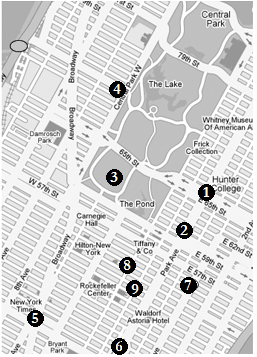 We only had half a day, and NYC has several hundred sacred places. Here’s the list of stops we made:
We only had half a day, and NYC has several hundred sacred places. Here’s the list of stops we made: To help set the mood and get people’s attention, I worked with designer
To help set the mood and get people’s attention, I worked with designer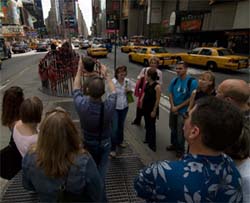 I confess I hate guided tours. They treat you like children, lecture you to death, and bury the pleasure of discovery and learning under the weight of itinerary. I think anti-tour tours are the best possible experience. And since this was a group of designers, people who know how to look at things, I planned to provide some context, teach a few architectural concepts, but mostly get out of their way and maximize people’s time exploring on their own.
I confess I hate guided tours. They treat you like children, lecture you to death, and bury the pleasure of discovery and learning under the weight of itinerary. I think anti-tour tours are the best possible experience. And since this was a group of designers, people who know how to look at things, I planned to provide some context, teach a few architectural concepts, but mostly get out of their way and maximize people’s time exploring on their own.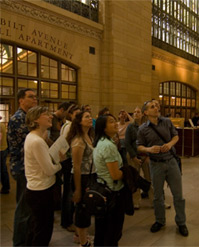 I found the challenge of tour design echoed the common issues designers face: tradeoffs, compromises, logistics. The challenges of moving 16 people around NYC forced me to concentrate the locations we picked.
I found the challenge of tour design echoed the common issues designers face: tradeoffs, compromises, logistics. The challenges of moving 16 people around NYC forced me to concentrate the locations we picked.
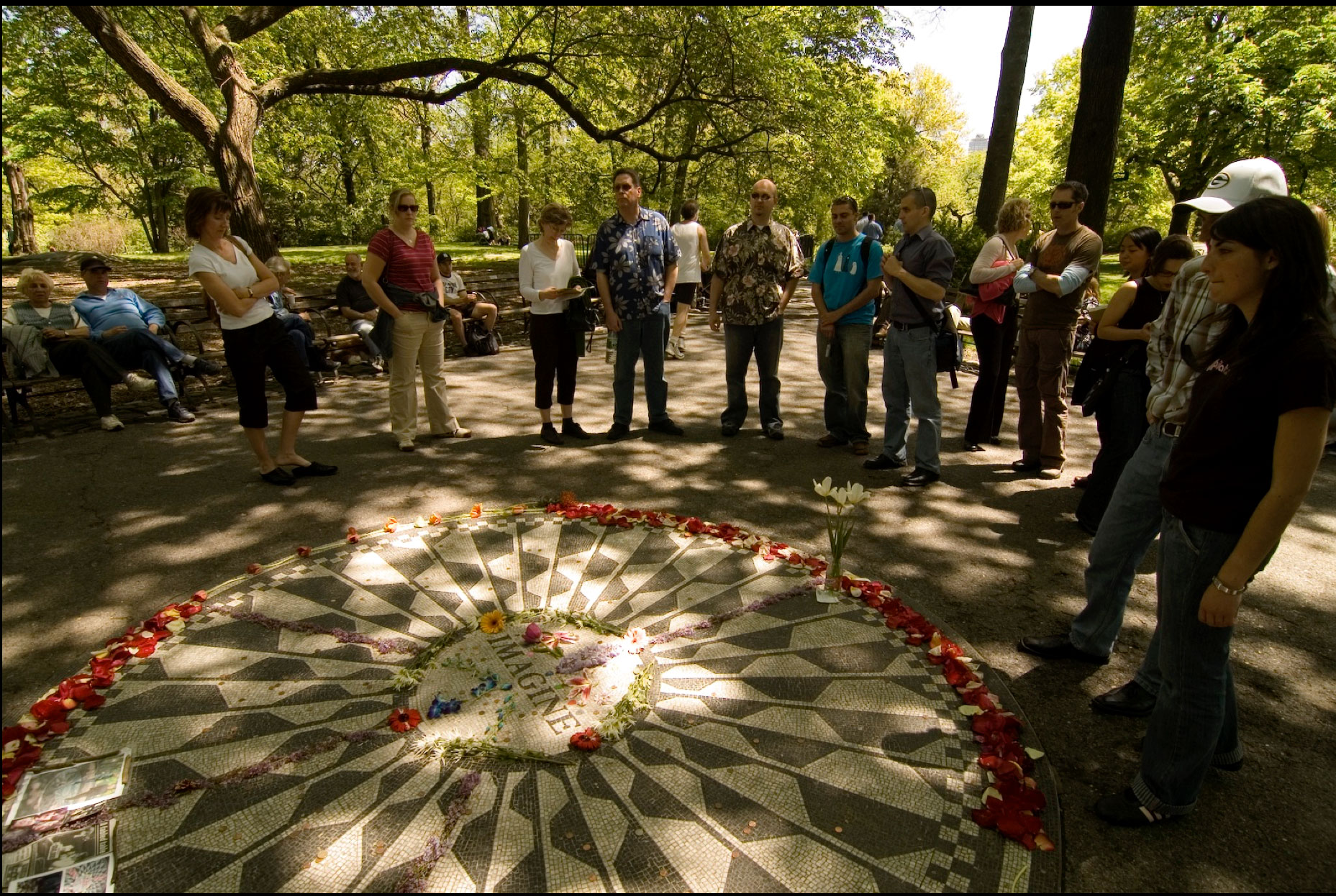
 I’ve owned only three great machines – three devices built so well that they not only lasted more than a decade, but served their purposes so well that I never replaced them with newer models. And by my count, I spent more time interacting with these products than many of the other machines I owned combined.
I’ve owned only three great machines – three devices built so well that they not only lasted more than a decade, but served their purposes so well that I never replaced them with newer models. And by my count, I spent more time interacting with these products than many of the other machines I owned combined. Gel
Gel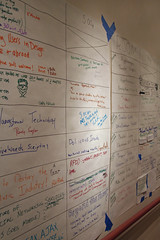 In thinking over my experiences at various
In thinking over my experiences at various 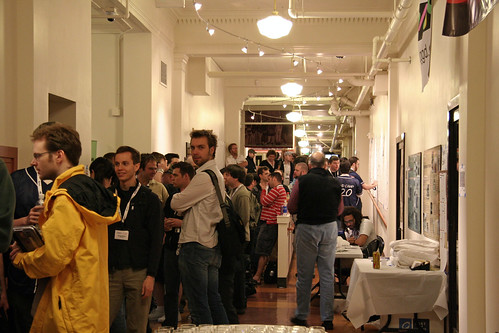 The thing I noticed most was how different the vibe of a conference is depending on the physical space it’s in. Mindcamp 1.0 was in a big empty floor of an office building. 2.0 was in a community center, basically a small school. The energy was very different – it was harder to get around, and even though the number of people was 20% larger, it felt much more crowded. The area by the session list, a narrow hallway, was jammed tight between sessions. At
The thing I noticed most was how different the vibe of a conference is depending on the physical space it’s in. Mindcamp 1.0 was in a big empty floor of an office building. 2.0 was in a community center, basically a small school. The energy was very different – it was harder to get around, and even though the number of people was 20% larger, it felt much more crowded. The area by the session list, a narrow hallway, was jammed tight between sessions. At 